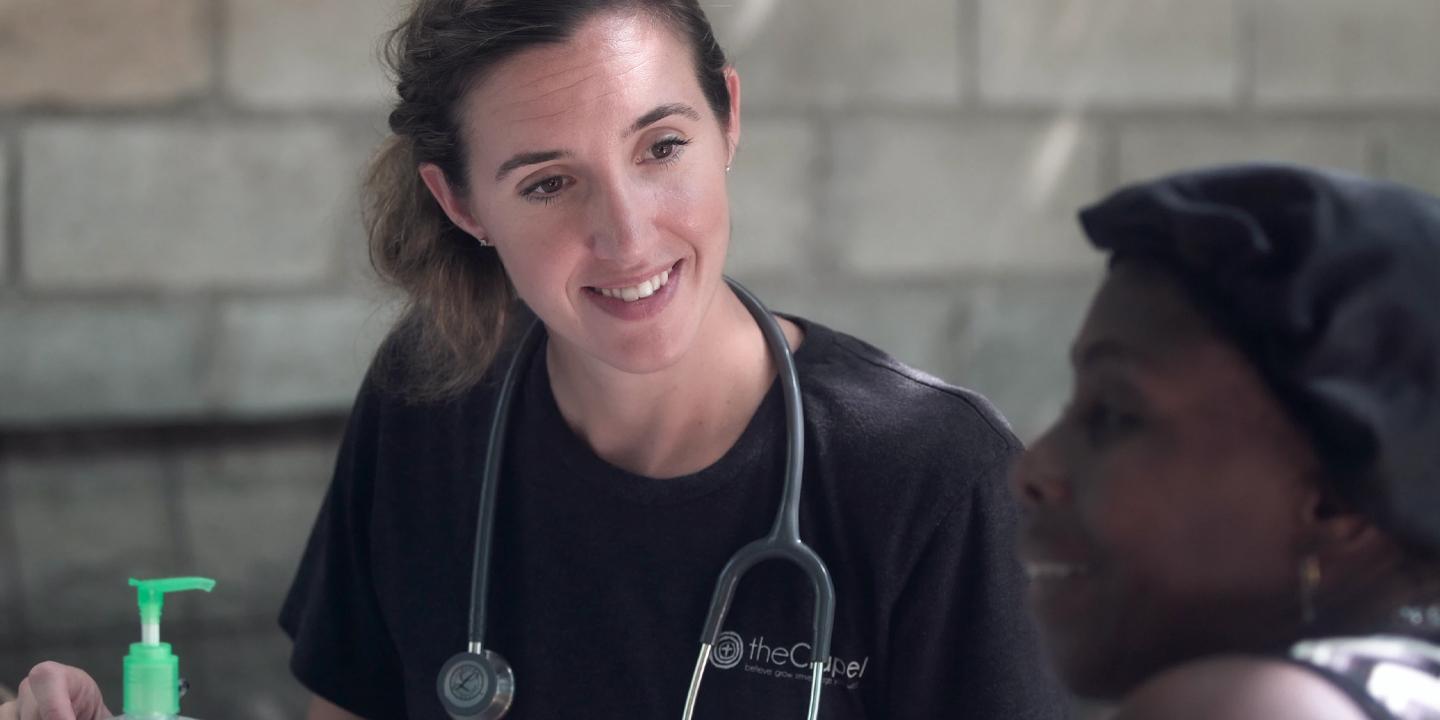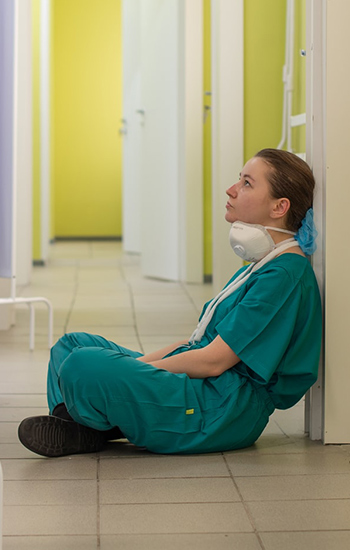HEALTHCARE
We need to think differently about the drivers that inform hospital and healthcare design
When healthcare organizations contract architectural teams to design hospitals, the owners’ priorities almost invariably relate to functionality. New facilities must accommodate a certain number of patients or a certain volume of activity within the least amount of space, within the standards and at the lowest possible operating cost. Space must be planned to enable operational efficiency. Building systems and materials must be assessed for durability and maintainability.
The result is often buildings that work for the ‘users’ of the sponsoring organization. But without seriously engaging patients and families in the design process, how do we know if the building works for the patients for whom the hospital is actually designed? We assume that clinicians can serve as ‘proxies’ for patients and families, but there is no evidence to verify this assumption. Most hospital leaders and users intuitively support the notion of creating environments that heal, but when push comes to shove, efficiency always eats ambience for breakfast. If, however, we embed the notion that patient empathy must be a design driver, new revelations will emerge in how we prioritize design solutions.
Empathy in healthcare design improves outcomes
From a medical perspective, this matters. Across the healthcare sector, studies have shown that empathy-based care results in better outcomes for patients. Faster recovery, shorter hospital stays, less likelihood of re-admission ― all have been linked to care provided by care givers who are trained to imagine what it feels like to be a patient. As a result, empathy is now routinely taught at the leading medical schools around the world.
So, given that ‘empathy-based care’ by clinicians has proven patient care efficacy, could ‘empathy-based design’ not lead to similar outcomes? What if design practice were to follow clinical practice and start from a point of imagining what it might be like to be a patient by putting yourself in their shoes? Could we create hospitals with spaces designed specifically to evoke positive human emotions and counteract the negative emotions that patients typically carry with them through their clinical journey? Our research into the emotions that every cancer patient experiences suggests we could.
Imagining how it feels
Imagine for a moment how it feels to be a cancer patient. The journey through diagnosis and treatment is often long and traumatizing. Patients encounter a wide range of spaces as they make that journey ― from parking garages, via reception desks and waiting rooms, into consultants’ offices, exam rooms, treatment rooms, chemotherapy and radiotherapy suites, and more. Pain, fear, loneliness, worry, anxiety, helplessness, anger, and dread are just a few of the many emotions the research tells us that all cancer patients experience at some point during their treatment and recovery journey.
Instead of solutions designed to lessen these negative emotions, sometimes we inadvertently design solutions that exacerbate them. For example, if we start from the knowledge that all cancer patients experience high anxiety at almost every step along their diagnosis and treatment journey, why do we insist on including design elements that often serve to increase their anxiety? For example, it’s not hard to imagine the frustration and anxiety that convoluted, poorly lit and full parking garages might elicit from patients arriving at a hospital to begin their treatment. Similarly, insisting that they need to first register and then sit and wait in a series of rooms before treatment must seem tortuous for cancer patients for whom the notion of time takes on an entirely new meaning. If you fear you may only have months left to live, anything imposed that can be seen as a waste of their valuable time is unacceptable. Conventional designs, in such cases, are making a bad situation worse.
Counteracting negative emotions
Enabling patients to tell their stories and talk about what it feels like to be on this journey can help design teams create spaces that can neutralize negative emotions and even replace them with something more empathetic. That could include, for example, eliminating the potential frustration of parking garages by offering cancer patients a valet parking service staffed by volunteers. Or eliminating waiting rooms and check-in registration processes all together by applying better scheduling technologies or phone-based apps so that patients can proceed straight to consultation or treatment without having to wait unnecessarily first.
Our research indicates that all cancer patients suffer from fear at some point in their treatment journey. If ‘hope’ is the opposite of fear, then what environments are more likely to evoke emotions of hope? What we have learned is that, although views of nature tend to evoke a sense of hope, views of ’big nature’, such as mountain, lake or river views, big sky or the four seasons as opposed to views of a small sample of nature, evoke a much more profound sense of hope. Similarly, our research shows that a more natural or wild garden tends to elicit positive emotions among cancer patients. By contrast, formal, more structured and manicured gardens are more likely to remind them of the lack of control they are experiencing in their lives. Similarly, we know that art can be used as an important distraction. But our research shows that art or sculpture that is too complex can evoke negative emotions and heighten anxiety while art or sculpture that is more simple and less complex tends to lower patient anxiety.
Designing empathy into the fabric
The point is we as designers or ‘users’ cannot assume that we truly understand what it feels like to be a cancer patient ― or any other patient. To create buildings and important spaces within buildings that are purpose-designed to respond to patients’ emotions may dramatically change the primary design drivers we traditionally follow.
Some leading organizations are already on board with the concept of empathy-based healthcare design. For example, Cleveland Clinic in Ohio, which has ranked as one of the top hospitals in the US for 25 years, puts the patient experience at the heart of care. Planetree Hospitals put a similar emphasis on patient empathy. The Griffin Hospital in Connecticut, the home of Planetree, requires all new hires to spend several days in an offsite retreat facility and undergo empathy-based learning exercises to experience first-hand what it is like to be a patient. For any healthcare organizations looking to follow in the shoes of these leaders, empathy needs to become a much more important design driver. To deliver the best health outcomes for patients, empathy must be designed into the fabric of our hospitals and healthcare buildings.
How to get empathy into your design process
Have the conversation well before you commission capital projects:
Take time to become more informed about empathy-based design and engage colleagues and stakeholders in understanding its potential. This should result in empathy-based design drivers being considered and enshrined in the project charter as a requirement in the RFP. Trying to distil such information during the actual design process is often incompatible with the need to drive schedule.
Create opportunities for design teams to understand how patients feel:
Provide design teams with access to patients for the purposes of research. For example, do you have a panel of recovered patients who have agreed to support your hospital and who would be happy to help by sharing their experience? Have you created a patient advisory committee that can commit to participate in empathy mapping workshops? Our teams use these tools to provide a forum to capture patients’ stories and the human touch points that can become a set of important design drivers, in addition to the normal drivers of functionality, efficiency and flow.
Build the requirement for empathy-based design into the RFP process:
Ask prospective tenderers to set out in detail their plans for engaging with patients and ask what tools they would employ to capture patient and family stories and how that new source of information could be used to influence design.
Read Next
Article
Nursing focused design: How do we heal the healers?
By: Ian Sinclair
Article
Strategies for alleviating stress
By: Kasian
We’d love to get to know you
Get in touch
"*" indicates required fields
Get in touch
Share





